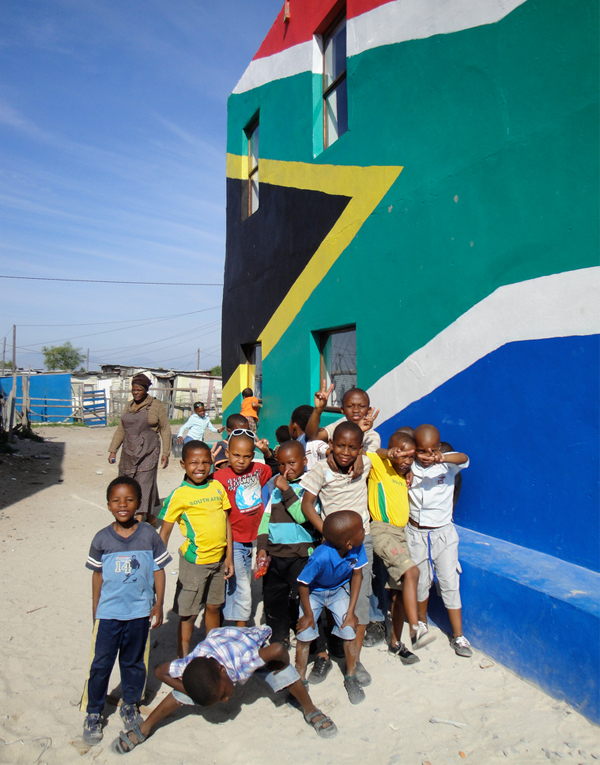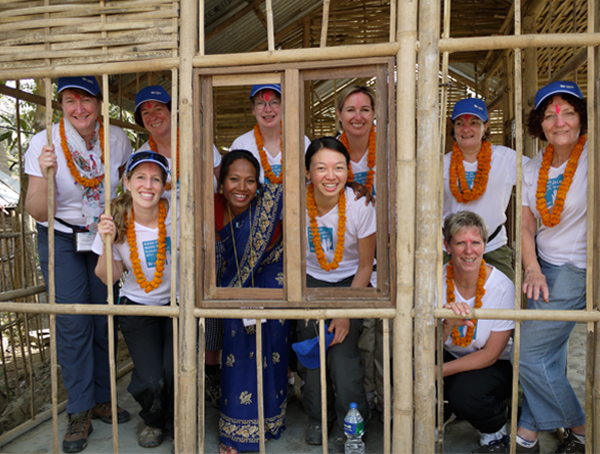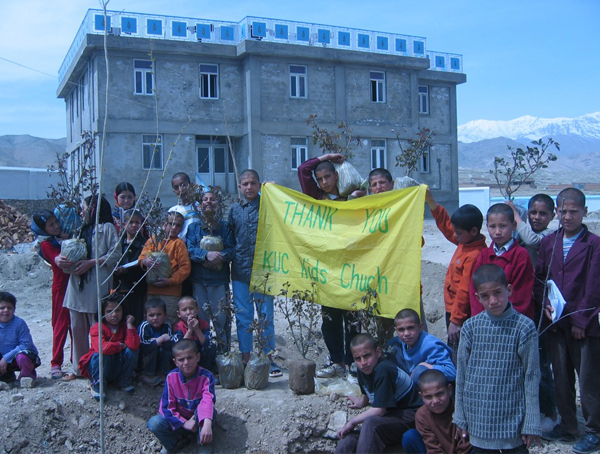
Democratic design builds community and amenity
Share
Above image courtesy Habitat for Humanity.
As cities expand in both sprawl and height to accommodate increased population growth, there is increased responsibility within the built environment industry to continually improve the standard of living conditions on a local and international level.
Vertiginous apartment buildings in the works for Melbourne will radically change the city skyline in coming years, most notably Elenberg Fraser’s Victoria One set to become the tallest residential building in the CBD, and a 36-storey development recently approved for suburban Box Hill. These projects are indicative of the evolution in local residential models, a push towards large scale multi-residential living more customarily seen in neighbouring countries across Asia Pacific. But while new high-rise apartments are an option for a privileged few in Australia, the foremost priorities for built environment professionals worldwide remain; to ensure that considered design solutions address fundamental living requirements, and are made available to all communities.
In a physical sense, it is imperative that built design is experientially effortless, and inclusive of a range of abilities and ages. Kerri Major from Standards Australia says that their goal is to “create a safe, sustainable and accessible built environment,” and “improve accessibility for all”. Designers, architects and industry professionals must keep abreast of developments in building standards, to ensure that the needs of all stakeholders are addressed within a space on a practical level.
Though at the core of the Great Australian Dream, the high cost of entering the property market has made home ownership a pipe dream for many, with low-income families at the greatest risk of being marginalised. Habitat for Humanity works on the premise that “safe and affordable housing provides a path out of poverty,” with the belief that every person has a right to a “decent place to live,” explains Zoe Nelson-Carey, national partnerships manager for Habitat for Humanity Australia. The global not-for-profit demonstrates the crucial role that designers and architects play in providing built shelter as a personal sanctuary for individuals and families.

Indlovu Project Shaster Foundation in Cape Town built out of sandbags by the local women. Image courtesy Architecture Without Frontiers
Beyond the home, public buildings should serve the wider community, creating optimistic places for people to converge. At the Indlovu Project in South Africa, Architects Without Frontiers house a medical clinic, youth centre, hall and a skills training centre within a singular complex. The civic benefits providing a space for people of all ages and statuses to come together are manifold, and instrumental in strengthening ties within the community. AWF challenges the architectural discipline to broaden the scope by “engaging with vulnerable communities and global environmental challenges,”says RMIT associate professor Esther Charlesworth RAIA.
Basic infrastructure is a privilege often taken for granted in our cities, with a majority of Australians having access to sealed roads, drinking water on tap and hygienic bathroom facilities. “In Australia, we have exceptional skills in science, technology, engineering and design to solve major humanitarian issues,” says James Fitzgerald, director of Engineers Without Borders Australia. “However, there is a global gap in access to appropriate, sustainable engineering services and infrastructure.” With a view to resolving this, EWB is set to launch EWB Connect this year, a program that will aid in coordinating pro bono engineering, design and construction services for community groups, demonstrating the concept philanthropy through practice.
EWB, AWF and Habitat for Humanity all offer pro bono services in order to design buildings and infrastructure for disadvantaged communities, in Australia and abroad. Their work also helps to provide functional amenity and shelter to meet basic requirements in developing regions – restoring dignity to those most in need.
The overarching priority for industry is to make effective and inspired solutions accessible to everyone, creating a universally beneficial and sustainable democracy of design.
This year, DesignBUILD addresses the growing need for socially responsible and ethical design with the introduction of their Industry Services Pavilion, including representatives from Habitat for Humanity, Architects Without Frontiers (AWF), Engineers Without Borders (EWB) and Standards Australia.
DesignBUILD is on 28 – 30 April, at Sydney Showground, Sydney Olympic Park.
For more information, visit designbuildexpo.com.au


















